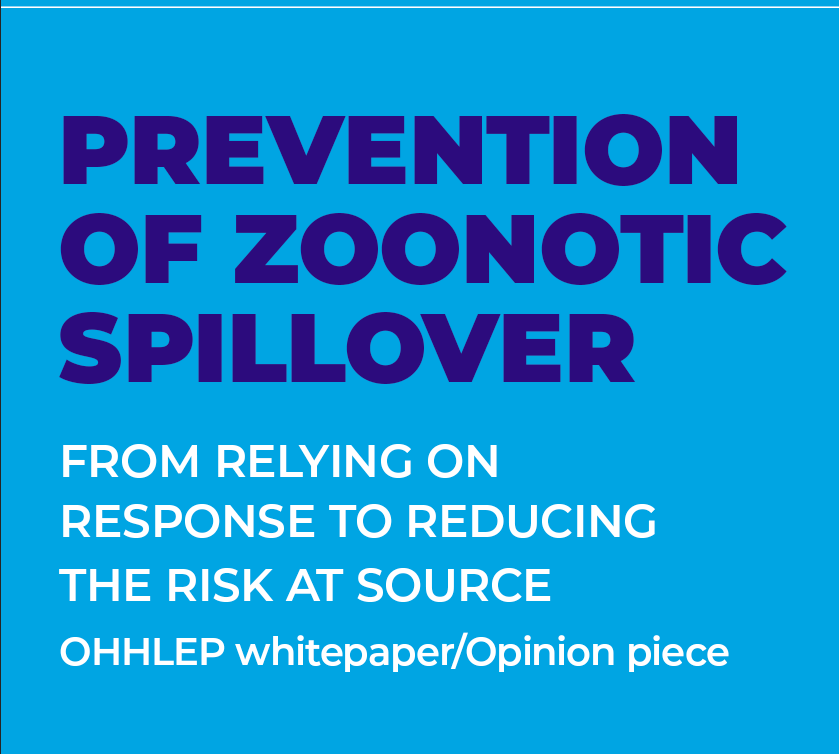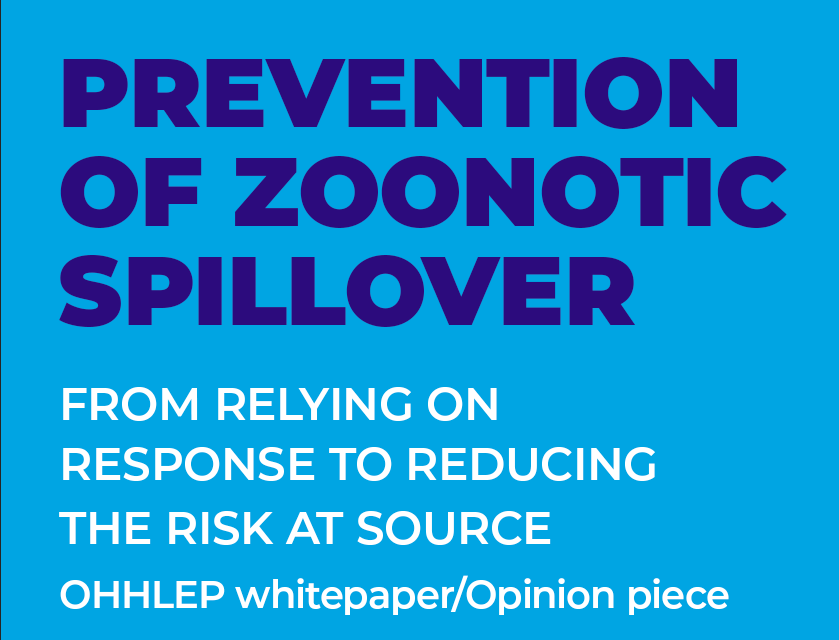
At the request of the Quadripartite organizations, the One Health High-Level Expert Panel (OHHLEP) recently published a white paper calling for enhanced prevention of zoonotic spillover within the triad of Pandemic Prevention, Preparedness, and Response. The paper advocates for the need to reduce the risk of zoonotic disease spillover at source through improved prevention measures, an approach that is more efficient than relying on disease detection and response.
OHHLEP’s call to promote prevention, align strategies, fill gaps, and sustain risk reduction.
The paper states “(It’s) clear that pandemic prevention at the source cannot continue as an afterthought – a much larger commitment is overdue and sorely needed to prevent future pandemics”. It highlights that efforts to prevent epidemics usually only begin after a microorganism (pathogen) has already made the leap from animals to humans (described as a spillover event), allowing a given disease to re-emerge or new ones to emerge. It recommends distinguishing containment of outbreak activities from those targeting the prevention of spillover. This intends to draw attention to the lack of emphasis and resources currently devoted to prevention and the reduction of risks at source.
The OHHLEP proposes the following definition:
“Prevention of pathogen spillover from animals to humans means shifting the infectious disease control paradigm from reactive to proactive (primary prevention). Prevention includes addressing the drivers of disease emergence, namely ecological, meteorological and anthropogenic factors and activities that increase spillover risk, in order to reduce the risk of human infection. It is informed by, amongst other actions, biosurveillance in natural hosts, people and the environment, understanding pathogen infection dynamics and implementing intervention activities.”
Shifting the paradigm from reactive to proactive requires One Health approaches that address the multiple drivers of disease emergence. These include changes in land use related to infrastructure and industry development or agricultural expansion, and unsustainable, unsafe or illegal animal hunting, farming, and trade. Overarching drivers such as climate change, poverty and socioeconomic inequalities, and basic animal and human health and animal welfare practices, also need to be considered.
The paper points out that “preventing future pandemics will require sustainable investment in spillover prevention” and actions to prevent disease spillover are more cost effective than response activities. Prevention costs range from an estimated US$ 10 billion to US$ 31 billion per year globally1, while the response to recent infectious disease crises such as Ebola and Mpox epidemics cost more time and money than what would be required to initiate prevention approaches. For example, the expected economic losses from the COVID-19 pandemic are estimated at nearly US$14 trillion through 20242.
The OHHLEP underscores that the One Health approach would not just help to prevent new epidemics and pandemics, but would also provide significant economic, social and environmental co-benefits such as reduced greenhouse gas emissions.
Read the full white paper here: Prevention of zoonotic spillover












